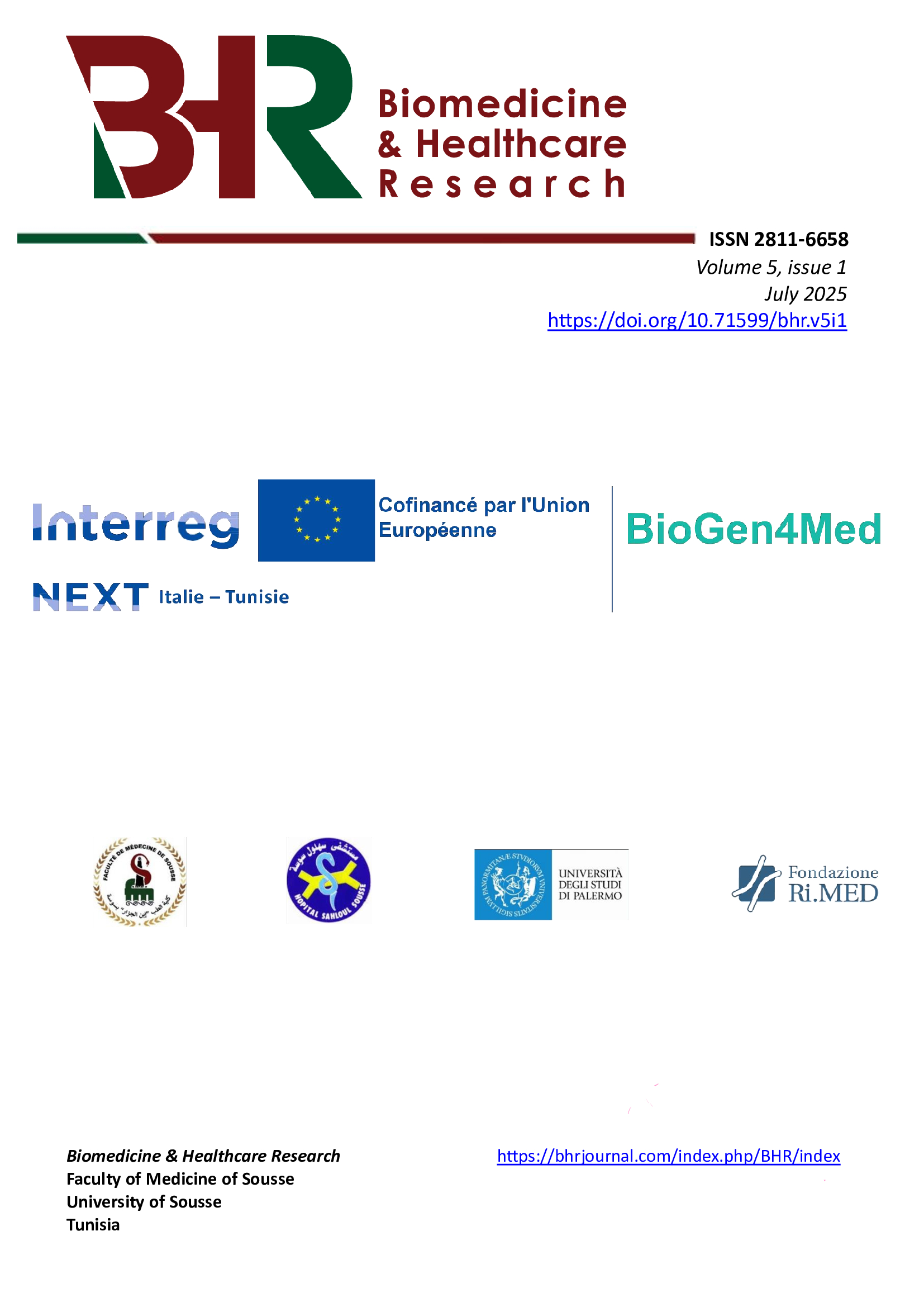Insights into laryngeal papillomatosis: Diagnostic challenges, therapeutic advances, and evolutionary patterns
DOI :
https://doi.org/10.71599/bhr.v5i1.165Mots-clés :
Larynx, Papilloma, Papilloma virus, Recurrence, Malignant transformation.Résumé
Introduction: Laryngeal papillomatosis (LP) is caused by human papillomavirus (HPV), primarily types 6 and 11. LP is a benign papillary tumor of squamous cell origin that develops in the larynx and is most observed in children. This study aims to describe the diagnostic features and clinical course of laryngeal papillomatosis, and to review recent advances in its etiopathogenesis and treatment.
Patients and Methods: We conducted a retrospective, descriptive study of 20 cases of laryngeal papillomatosis diagnosed over a 32-year period (January 1990 to December 2022) in the ENT and Head and Neck Surgery Department.
Results: The mean age of patients was 24 years, with a bimodal age distribution: a juvenile form (55%) and an adult form (45%). The cohort included 12 males (60%) and 8 females (40%). All patients underwent surgical removal of papilloma, with 13 patients (65%) also receiving adjuvant treatment with bleomycin and antiviral therapy. Tracheotomy was performed in 6 patients (30%). Outcomes included remission in 5 patients (25%), disease recurrence in 17 patients (85%), and malignant transformation in 5 patients (25%).
Conclusion: Laryngeal papillomatosis remains a challenging condition due to its complex etiopathogenesis, variable clinical presentation, and unpredictable course, which can be life threatening. LP diagnosis remains primarily clinical.
Téléchargements
Téléchargements
Publiée
Comment citer
Numéro
Rubrique
Licence
(c) Tous droits réservés Malika El Omri, Abdoulaziz Hamza; Bellakhdher Mouna, Kermani Wassim, Ghammem Monia, jihene houas, Meherzi Abir, Mokni Moncef 2025

Ce travail est disponible sous licence Creative Commons Attribution - Pas d'Utilisation Commerciale - Pas de Modification 4.0 International.





